-
EXECUTIVE SUMMARY
-
Market Overview
-
Key Findings
-
Market Segmentation
-
Competitive Landscape
-
Challenges and Opportunities
-
Future Outlook
-
MARKET INTRODUCTION
-
Definition
-
Scope of the study
- Research Objective
- Assumption
- Limitations
-
RESEARCH METHODOLOGY
-
Overview
-
Data Mining
-
Secondary Research
-
Primary Research
- Primary Interviews and Information Gathering Process
- Breakdown of Primary Respondents
-
Forecasting Model
-
Market Size Estimation
- Bottom-Up Approach
- Top-Down Approach
-
Data Triangulation
-
Validation
-
MARKET DYNAMICS
-
Overview
-
Drivers
-
Restraints
-
Opportunities
-
MARKET FACTOR ANALYSIS
-
Value chain Analysis
-
Porter's Five Forces Analysis
- Bargaining Power of Suppliers
- Bargaining Power of Buyers
- Threat of New Entrants
- Threat of Substitutes
- Intensity of Rivalry
-
COVID-19 Impact Analysis
- Market Impact Analysis
- Regional Impact
- Opportunity and Threat Analysis
-
MARKET, BY WINE TYPE (USD BILLION)
-
Red Wine
-
White Wine
-
Sparkling Wine
-
Rose Wine
-
MARKET, BY FLAVOR PROFILE (USD BILLION)
-
Fruity
-
Spicy
-
Earthy
-
Floral
-
MARKET, BY PACKAGING TYPE (USD BILLION)
-
Bottle
-
Box
-
Cask
-
Can
-
MARKET, BY ALCOHOL CONTENT (USD BILLION)
-
Low Alcohol
-
Standard Alcohol
-
High Alcohol
-
MARKET, BY REGIONAL (USD BILLION)
-
North America
- US
- Canada
-
Europe
- Germany
- UK
- France
- Russia
- Italy
- Spain
- Rest of Europe
-
APAC
- China
- India
- Japan
- South Korea
- Malaysia
- Thailand
- Indonesia
- Rest of APAC
-
South America
- Brazil
- Mexico
- Argentina
- Rest of South America
-
MEA
- GCC Countries
- South Africa
- Rest of MEA
-
COMPETITIVE LANDSCAPE
-
Overview
-
Competitive Analysis
-
Market share Analysis
-
Major Growth Strategy in the Wine Industry
-
Competitive Benchmarking
-
Leading Players in Terms of Number of Developments in the Wine Industry
-
Key developments and growth strategies
- New Product Launch/Service Deployment
- Merger & Acquisitions
- Joint Ventures
-
Major Players Financial Matrix
- Sales and Operating Income
- Major Players R&D Expenditure. 2023
-
COMPANY PROFILES
-
Pernod Ricard
- Financial Overview
- Products Offered
- Key Developments
- SWOT Analysis
- Key Strategies
-
Constellation Brands
- Financial Overview
- Products Offered
- Key Developments
- SWOT Analysis
- Key Strategies
-
Accolade Wines
- Financial Overview
- Products Offered
- Key Developments
- SWOT Analysis
- Key Strategies
-
Ste. Michelle Wine Estates
- Financial Overview
- Products Offered
- Key Developments
- SWOT Analysis
- Key Strategies
-
E. & J. Gallo Winery
- Financial Overview
- Products Offered
- Key Developments
- SWOT Analysis
- Key Strategies
-
Diageo
- Financial Overview
- Products Offered
- Key Developments
- SWOT Analysis
- Key Strategies
-
Barefoot Wine
- Financial Overview
- Products Offered
- Key Developments
- SWOT Analysis
- Key Strategies
-
Cattail Creek Winery
- Financial Overview
- Products Offered
- Key Developments
- SWOT Analysis
- Key Strategies
-
Jackson Family Wines
- Financial Overview
- Products Offered
- Key Developments
- SWOT Analysis
- Key Strategies
-
Chandon
- Financial Overview
- Products Offered
- Key Developments
- SWOT Analysis
- Key Strategies
-
Moet Hennessy
- Financial Overview
- Products Offered
- Key Developments
- SWOT Analysis
- Key Strategies
-
Treasury Wine Estates
- Financial Overview
- Products Offered
- Key Developments
- SWOT Analysis
- Key Strategies
-
The Wine Group
- Financial Overview
- Products Offered
- Key Developments
- SWOT Analysis
- Key Strategies
-
Cameron Hughes Wine
- Financial Overview
- Products Offered
- Key Developments
- SWOT Analysis
- Key Strategies
-
Domaine Chandon
- Financial Overview
- Products Offered
- Key Developments
- SWOT Analysis
- Key Strategies
-
APPENDIX
-
References
-
Related Reports
-
LIST OF TABLES
-
LIST OF ASSUMPTIONS
-
NORTH AMERICA WINE MARKET SIZE ESTIMATES & FORECAST, BY WINE TYPE, 2019-2035 (USD BILLIONS)
-
NORTH AMERICA WINE MARKET SIZE ESTIMATES & FORECAST, BY FLAVOR PROFILE, 2019-2035 (USD BILLIONS)
-
NORTH AMERICA WINE MARKET SIZE ESTIMATES & FORECAST, BY PACKAGING TYPE, 2019-2035 (USD BILLIONS)
-
NORTH AMERICA WINE MARKET SIZE ESTIMATES & FORECAST, BY ALCOHOL CONTENT, 2019-2035 (USD BILLIONS)
-
NORTH AMERICA WINE MARKET SIZE ESTIMATES & FORECAST, BY REGIONAL, 2019-2035 (USD BILLIONS)
-
US WINE MARKET SIZE ESTIMATES & FORECAST, BY WINE TYPE, 2019-2035 (USD BILLIONS)
-
US WINE MARKET SIZE ESTIMATES & FORECAST, BY FLAVOR PROFILE, 2019-2035 (USD BILLIONS)
-
US WINE MARKET SIZE ESTIMATES & FORECAST, BY PACKAGING TYPE, 2019-2035 (USD BILLIONS)
-
US WINE MARKET SIZE ESTIMATES & FORECAST, BY ALCOHOL CONTENT, 2019-2035 (USD BILLIONS)
-
US WINE MARKET SIZE ESTIMATES & FORECAST, BY REGIONAL, 2019-2035 (USD BILLIONS)
-
CANADA WINE MARKET SIZE ESTIMATES & FORECAST, BY WINE TYPE, 2019-2035 (USD BILLIONS)
-
CANADA WINE MARKET SIZE ESTIMATES & FORECAST, BY FLAVOR PROFILE, 2019-2035 (USD BILLIONS)
-
CANADA WINE MARKET SIZE ESTIMATES & FORECAST, BY PACKAGING TYPE, 2019-2035 (USD BILLIONS)
-
CANADA WINE MARKET SIZE ESTIMATES & FORECAST, BY ALCOHOL CONTENT, 2019-2035 (USD BILLIONS)
-
CANADA WINE MARKET SIZE ESTIMATES & FORECAST, BY REGIONAL, 2019-2035 (USD BILLIONS)
-
EUROPE WINE MARKET SIZE ESTIMATES & FORECAST, BY WINE TYPE, 2019-2035 (USD BILLIONS)
-
EUROPE WINE MARKET SIZE ESTIMATES & FORECAST, BY FLAVOR PROFILE, 2019-2035 (USD BILLIONS)
-
EUROPE WINE MARKET SIZE ESTIMATES & FORECAST, BY PACKAGING TYPE, 2019-2035 (USD BILLIONS)
-
EUROPE WINE MARKET SIZE ESTIMATES & FORECAST, BY ALCOHOL CONTENT, 2019-2035 (USD BILLIONS)
-
EUROPE WINE MARKET SIZE ESTIMATES & FORECAST, BY REGIONAL, 2019-2035 (USD BILLIONS)
-
GERMANY WINE MARKET SIZE ESTIMATES & FORECAST, BY WINE TYPE, 2019-2035 (USD BILLIONS)
-
GERMANY WINE MARKET SIZE ESTIMATES & FORECAST, BY FLAVOR PROFILE, 2019-2035 (USD BILLIONS)
-
GERMANY WINE MARKET SIZE ESTIMATES & FORECAST, BY PACKAGING TYPE, 2019-2035 (USD BILLIONS)
-
GERMANY WINE MARKET SIZE ESTIMATES & FORECAST, BY ALCOHOL CONTENT, 2019-2035 (USD BILLIONS)
-
GERMANY WINE MARKET SIZE ESTIMATES & FORECAST, BY REGIONAL, 2019-2035 (USD BILLIONS)
-
UK WINE MARKET SIZE ESTIMATES & FORECAST, BY WINE TYPE, 2019-2035 (USD BILLIONS)
-
UK WINE MARKET SIZE ESTIMATES & FORECAST, BY FLAVOR PROFILE, 2019-2035 (USD BILLIONS)
-
UK WINE MARKET SIZE ESTIMATES & FORECAST, BY PACKAGING TYPE, 2019-2035 (USD BILLIONS)
-
UK WINE MARKET SIZE ESTIMATES & FORECAST, BY ALCOHOL CONTENT, 2019-2035 (USD BILLIONS)
-
UK WINE MARKET SIZE ESTIMATES & FORECAST, BY REGIONAL, 2019-2035 (USD BILLIONS)
-
FRANCE WINE MARKET SIZE ESTIMATES & FORECAST, BY WINE TYPE, 2019-2035 (USD BILLIONS)
-
FRANCE WINE MARKET SIZE ESTIMATES & FORECAST, BY FLAVOR PROFILE, 2019-2035 (USD BILLIONS)
-
FRANCE WINE MARKET SIZE ESTIMATES & FORECAST, BY PACKAGING TYPE, 2019-2035 (USD BILLIONS)
-
FRANCE WINE MARKET SIZE ESTIMATES & FORECAST, BY ALCOHOL CONTENT, 2019-2035 (USD BILLIONS)
-
FRANCE WINE MARKET SIZE ESTIMATES & FORECAST, BY REGIONAL, 2019-2035 (USD BILLIONS)
-
RUSSIA WINE MARKET SIZE ESTIMATES & FORECAST, BY WINE TYPE, 2019-2035 (USD BILLIONS)
-
RUSSIA WINE MARKET SIZE ESTIMATES & FORECAST, BY FLAVOR PROFILE, 2019-2035 (USD BILLIONS)
-
RUSSIA WINE MARKET SIZE ESTIMATES & FORECAST, BY PACKAGING TYPE, 2019-2035 (USD BILLIONS)
-
RUSSIA WINE MARKET SIZE ESTIMATES & FORECAST, BY ALCOHOL CONTENT, 2019-2035 (USD BILLIONS)
-
RUSSIA WINE MARKET SIZE ESTIMATES & FORECAST, BY REGIONAL, 2019-2035 (USD BILLIONS)
-
ITALY WINE MARKET SIZE ESTIMATES & FORECAST, BY WINE TYPE, 2019-2035 (USD BILLIONS)
-
ITALY WINE MARKET SIZE ESTIMATES & FORECAST, BY FLAVOR PROFILE, 2019-2035 (USD BILLIONS)
-
ITALY WINE MARKET SIZE ESTIMATES & FORECAST, BY PACKAGING TYPE, 2019-2035 (USD BILLIONS)
-
ITALY WINE MARKET SIZE ESTIMATES & FORECAST, BY ALCOHOL CONTENT, 2019-2035 (USD BILLIONS)
-
ITALY WINE MARKET SIZE ESTIMATES & FORECAST, BY REGIONAL, 2019-2035 (USD BILLIONS)
-
SPAIN WINE MARKET SIZE ESTIMATES & FORECAST, BY WINE TYPE, 2019-2035 (USD BILLIONS)
-
SPAIN WINE MARKET SIZE ESTIMATES & FORECAST, BY FLAVOR PROFILE, 2019-2035 (USD BILLIONS)
-
SPAIN WINE MARKET SIZE ESTIMATES & FORECAST, BY PACKAGING TYPE, 2019-2035 (USD BILLIONS)
-
SPAIN WINE MARKET SIZE ESTIMATES & FORECAST, BY ALCOHOL CONTENT, 2019-2035 (USD BILLIONS)
-
SPAIN WINE MARKET SIZE ESTIMATES & FORECAST, BY REGIONAL, 2019-2035 (USD BILLIONS)
-
REST OF EUROPE WINE MARKET SIZE ESTIMATES & FORECAST, BY WINE TYPE, 2019-2035 (USD BILLIONS)
-
REST OF EUROPE WINE MARKET SIZE ESTIMATES & FORECAST, BY FLAVOR PROFILE, 2019-2035 (USD BILLIONS)
-
REST OF EUROPE WINE MARKET SIZE ESTIMATES & FORECAST, BY PACKAGING TYPE, 2019-2035 (USD BILLIONS)
-
REST OF EUROPE WINE MARKET SIZE ESTIMATES & FORECAST, BY ALCOHOL CONTENT, 2019-2035 (USD BILLIONS)
-
REST OF EUROPE WINE MARKET SIZE ESTIMATES & FORECAST, BY REGIONAL, 2019-2035 (USD BILLIONS)
-
APAC WINE MARKET SIZE ESTIMATES & FORECAST, BY WINE TYPE, 2019-2035 (USD BILLIONS)
-
APAC WINE MARKET SIZE ESTIMATES & FORECAST, BY FLAVOR PROFILE, 2019-2035 (USD BILLIONS)
-
APAC WINE MARKET SIZE ESTIMATES & FORECAST, BY PACKAGING TYPE, 2019-2035 (USD BILLIONS)
-
APAC WINE MARKET SIZE ESTIMATES & FORECAST, BY ALCOHOL CONTENT, 2019-2035 (USD BILLIONS)
-
APAC WINE MARKET SIZE ESTIMATES & FORECAST, BY REGIONAL, 2019-2035 (USD BILLIONS)
-
CHINA WINE MARKET SIZE ESTIMATES & FORECAST, BY WINE TYPE, 2019-2035 (USD BILLIONS)
-
CHINA WINE MARKET SIZE ESTIMATES & FORECAST, BY FLAVOR PROFILE, 2019-2035 (USD BILLIONS)
-
CHINA WINE MARKET SIZE ESTIMATES & FORECAST, BY PACKAGING TYPE, 2019-2035 (USD BILLIONS)
-
CHINA WINE MARKET SIZE ESTIMATES & FORECAST, BY ALCOHOL CONTENT, 2019-2035 (USD BILLIONS)
-
CHINA WINE MARKET SIZE ESTIMATES & FORECAST, BY REGIONAL, 2019-2035 (USD BILLIONS)
-
INDIA WINE MARKET SIZE ESTIMATES & FORECAST, BY WINE TYPE, 2019-2035 (USD BILLIONS)
-
INDIA WINE MARKET SIZE ESTIMATES & FORECAST, BY FLAVOR PROFILE, 2019-2035 (USD BILLIONS)
-
INDIA WINE MARKET SIZE ESTIMATES & FORECAST, BY PACKAGING TYPE, 2019-2035 (USD BILLIONS)
-
INDIA WINE MARKET SIZE ESTIMATES & FORECAST, BY ALCOHOL CONTENT, 2019-2035 (USD BILLIONS)
-
INDIA WINE MARKET SIZE ESTIMATES & FORECAST, BY REGIONAL, 2019-2035 (USD BILLIONS)
-
JAPAN WINE MARKET SIZE ESTIMATES & FORECAST, BY WINE TYPE, 2019-2035 (USD BILLIONS)
-
JAPAN WINE MARKET SIZE ESTIMATES & FORECAST, BY FLAVOR PROFILE, 2019-2035 (USD BILLIONS)
-
JAPAN WINE MARKET SIZE ESTIMATES & FORECAST, BY PACKAGING TYPE, 2019-2035 (USD BILLIONS)
-
JAPAN WINE MARKET SIZE ESTIMATES & FORECAST, BY ALCOHOL CONTENT, 2019-2035 (USD BILLIONS)
-
JAPAN WINE MARKET SIZE ESTIMATES & FORECAST, BY REGIONAL, 2019-2035 (USD BILLIONS)
-
SOUTH KOREA WINE MARKET SIZE ESTIMATES & FORECAST, BY WINE TYPE, 2019-2035 (USD BILLIONS)
-
SOUTH KOREA WINE MARKET SIZE ESTIMATES & FORECAST, BY FLAVOR PROFILE, 2019-2035 (USD BILLIONS)
-
SOUTH KOREA WINE MARKET SIZE ESTIMATES & FORECAST, BY PACKAGING TYPE, 2019-2035 (USD BILLIONS)
-
SOUTH KOREA WINE MARKET SIZE ESTIMATES & FORECAST, BY ALCOHOL CONTENT, 2019-2035 (USD BILLIONS)
-
SOUTH KOREA WINE MARKET SIZE ESTIMATES & FORECAST, BY REGIONAL, 2019-2035 (USD BILLIONS)
-
MALAYSIA WINE MARKET SIZE ESTIMATES & FORECAST, BY WINE TYPE, 2019-2035 (USD BILLIONS)
-
MALAYSIA WINE MARKET SIZE ESTIMATES & FORECAST, BY FLAVOR PROFILE, 2019-2035 (USD BILLIONS)
-
MALAYSIA WINE MARKET SIZE ESTIMATES & FORECAST, BY PACKAGING TYPE, 2019-2035 (USD BILLIONS)
-
MALAYSIA WINE MARKET SIZE ESTIMATES & FORECAST, BY ALCOHOL CONTENT, 2019-2035 (USD BILLIONS)
-
MALAYSIA WINE MARKET SIZE ESTIMATES & FORECAST, BY REGIONAL, 2019-2035 (USD BILLIONS)
-
THAILAND WINE MARKET SIZE ESTIMATES & FORECAST, BY WINE TYPE, 2019-2035 (USD BILLIONS)
-
THAILAND WINE MARKET SIZE ESTIMATES & FORECAST, BY FLAVOR PROFILE, 2019-2035 (USD BILLIONS)
-
THAILAND WINE MARKET SIZE ESTIMATES & FORECAST, BY PACKAGING TYPE, 2019-2035 (USD BILLIONS)
-
THAILAND WINE MARKET SIZE ESTIMATES & FORECAST, BY ALCOHOL CONTENT, 2019-2035 (USD BILLIONS)
-
THAILAND WINE MARKET SIZE ESTIMATES & FORECAST, BY REGIONAL, 2019-2035 (USD BILLIONS)
-
INDONESIA WINE MARKET SIZE ESTIMATES & FORECAST, BY WINE TYPE, 2019-2035 (USD BILLIONS)
-
INDONESIA WINE MARKET SIZE ESTIMATES & FORECAST, BY FLAVOR PROFILE, 2019-2035 (USD BILLIONS)
-
INDONESIA WINE MARKET SIZE ESTIMATES & FORECAST, BY PACKAGING TYPE, 2019-2035 (USD BILLIONS)
-
INDONESIA WINE MARKET SIZE ESTIMATES & FORECAST, BY ALCOHOL CONTENT, 2019-2035 (USD BILLIONS)
-
INDONESIA WINE MARKET SIZE ESTIMATES & FORECAST, BY REGIONAL, 2019-2035 (USD BILLIONS)
-
REST OF APAC WINE MARKET SIZE ESTIMATES & FORECAST, BY WINE TYPE, 2019-2035 (USD BILLIONS)
-
REST OF APAC WINE MARKET SIZE ESTIMATES & FORECAST, BY FLAVOR PROFILE, 2019-2035 (USD BILLIONS)
-
REST OF APAC WINE MARKET SIZE ESTIMATES & FORECAST, BY PACKAGING TYPE, 2019-2035 (USD BILLIONS)
-
REST OF APAC WINE MARKET SIZE ESTIMATES & FORECAST, BY ALCOHOL CONTENT, 2019-2035 (USD BILLIONS)
-
REST OF APAC WINE MARKET SIZE ESTIMATES & FORECAST, BY REGIONAL, 2019-2035 (USD BILLIONS)
-
SOUTH AMERICA WINE MARKET SIZE ESTIMATES & FORECAST, BY WINE TYPE, 2019-2035 (USD BILLIONS)
-
SOUTH AMERICA WINE MARKET SIZE ESTIMATES & FORECAST, BY FLAVOR PROFILE, 2019-2035 (USD BILLIONS)
-
SOUTH AMERICA WINE MARKET SIZE ESTIMATES & FORECAST, BY PACKAGING TYPE, 2019-2035 (USD BILLIONS)
-
SOUTH AMERICA WINE MARKET SIZE ESTIMATES & FORECAST, BY ALCOHOL CONTENT, 2019-2035 (USD BILLIONS)
-
SOUTH AMERICA WINE MARKET SIZE ESTIMATES & FORECAST, BY REGIONAL, 2019-2035 (USD BILLIONS)
-
BRAZIL WINE MARKET SIZE ESTIMATES & FORECAST, BY WINE TYPE, 2019-2035 (USD BILLIONS)
-
BRAZIL WINE MARKET SIZE ESTIMATES & FORECAST, BY FLAVOR PROFILE, 2019-2035 (USD BILLIONS)
-
BRAZIL WINE MARKET SIZE ESTIMATES & FORECAST, BY PACKAGING TYPE, 2019-2035 (USD BILLIONS)
-
BRAZIL WINE MARKET SIZE ESTIMATES & FORECAST, BY ALCOHOL CONTENT, 2019-2035 (USD BILLIONS)
-
BRAZIL WINE MARKET SIZE ESTIMATES & FORECAST, BY REGIONAL, 2019-2035 (USD BILLIONS)
-
MEXICO WINE MARKET SIZE ESTIMATES & FORECAST, BY WINE TYPE, 2019-2035 (USD BILLIONS)
-
MEXICO WINE MARKET SIZE ESTIMATES & FORECAST, BY FLAVOR PROFILE, 2019-2035 (USD BILLIONS)
-
MEXICO WINE MARKET SIZE ESTIMATES & FORECAST, BY PACKAGING TYPE, 2019-2035 (USD BILLIONS)
-
MEXICO WINE MARKET SIZE ESTIMATES & FORECAST, BY ALCOHOL CONTENT, 2019-2035 (USD BILLIONS)
-
MEXICO WINE MARKET SIZE ESTIMATES & FORECAST, BY REGIONAL, 2019-2035 (USD BILLIONS)
-
ARGENTINA WINE MARKET SIZE ESTIMATES & FORECAST, BY WINE TYPE, 2019-2035 (USD BILLIONS)
-
ARGENTINA WINE MARKET SIZE ESTIMATES & FORECAST, BY FLAVOR PROFILE, 2019-2035 (USD BILLIONS)
-
ARGENTINA WINE MARKET SIZE ESTIMATES & FORECAST, BY PACKAGING TYPE, 2019-2035 (USD BILLIONS)
-
ARGENTINA WINE MARKET SIZE ESTIMATES & FORECAST, BY ALCOHOL CONTENT, 2019-2035 (USD BILLIONS)
-
ARGENTINA WINE MARKET SIZE ESTIMATES & FORECAST, BY REGIONAL, 2019-2035 (USD BILLIONS)
-
REST OF SOUTH AMERICA WINE MARKET SIZE ESTIMATES & FORECAST, BY WINE TYPE, 2019-2035 (USD BILLIONS)
-
REST OF SOUTH AMERICA WINE MARKET SIZE ESTIMATES & FORECAST, BY FLAVOR PROFILE, 2019-2035 (USD BILLIONS)
-
REST OF SOUTH AMERICA WINE MARKET SIZE ESTIMATES & FORECAST, BY PACKAGING TYPE, 2019-2035 (USD BILLIONS)
-
REST OF SOUTH AMERICA WINE MARKET SIZE ESTIMATES & FORECAST, BY ALCOHOL CONTENT, 2019-2035 (USD BILLIONS)
-
REST OF SOUTH AMERICA WINE MARKET SIZE ESTIMATES & FORECAST, BY REGIONAL, 2019-2035 (USD BILLIONS)
-
MEA WINE MARKET SIZE ESTIMATES & FORECAST, BY WINE TYPE, 2019-2035 (USD BILLIONS)
-
MEA WINE MARKET SIZE ESTIMATES & FORECAST, BY FLAVOR PROFILE, 2019-2035 (USD BILLIONS)
-
MEA WINE MARKET SIZE ESTIMATES & FORECAST, BY PACKAGING TYPE, 2019-2035 (USD BILLIONS)
-
MEA WINE MARKET SIZE ESTIMATES & FORECAST, BY ALCOHOL CONTENT, 2019-2035 (USD BILLIONS)
-
MEA WINE MARKET SIZE ESTIMATES & FORECAST, BY REGIONAL, 2019-2035 (USD BILLIONS)
-
GCC COUNTRIES WINE MARKET SIZE ESTIMATES & FORECAST, BY WINE TYPE, 2019-2035 (USD BILLIONS)
-
GCC COUNTRIES WINE MARKET SIZE ESTIMATES & FORECAST, BY FLAVOR PROFILE, 2019-2035 (USD BILLIONS)
-
GCC COUNTRIES WINE MARKET SIZE ESTIMATES & FORECAST, BY PACKAGING TYPE, 2019-2035 (USD BILLIONS)
-
GCC COUNTRIES WINE MARKET SIZE ESTIMATES & FORECAST, BY ALCOHOL CONTENT, 2019-2035 (USD BILLIONS)
-
GCC COUNTRIES WINE MARKET SIZE ESTIMATES & FORECAST, BY REGIONAL, 2019-2035 (USD BILLIONS)
-
SOUTH AFRICA WINE MARKET SIZE ESTIMATES & FORECAST, BY WINE TYPE, 2019-2035 (USD BILLIONS)
-
SOUTH AFRICA WINE MARKET SIZE ESTIMATES & FORECAST, BY FLAVOR PROFILE, 2019-2035 (USD BILLIONS)
-
SOUTH AFRICA WINE MARKET SIZE ESTIMATES & FORECAST, BY PACKAGING TYPE, 2019-2035 (USD BILLIONS)
-
SOUTH AFRICA WINE MARKET SIZE ESTIMATES & FORECAST, BY ALCOHOL CONTENT, 2019-2035 (USD BILLIONS)
-
SOUTH AFRICA WINE MARKET SIZE ESTIMATES & FORECAST, BY REGIONAL, 2019-2035 (USD BILLIONS)
-
REST OF MEA WINE MARKET SIZE ESTIMATES & FORECAST, BY WINE TYPE, 2019-2035 (USD BILLIONS)
-
REST OF MEA WINE MARKET SIZE ESTIMATES & FORECAST, BY FLAVOR PROFILE, 2019-2035 (USD BILLIONS)
-
REST OF MEA WINE MARKET SIZE ESTIMATES & FORECAST, BY PACKAGING TYPE, 2019-2035 (USD BILLIONS)
-
REST OF MEA WINE MARKET SIZE ESTIMATES & FORECAST, BY ALCOHOL CONTENT, 2019-2035 (USD BILLIONS)
-
REST OF MEA WINE MARKET SIZE ESTIMATES & FORECAST, BY REGIONAL, 2019-2035 (USD BILLIONS)
-
PRODUCT LAUNCH/PRODUCT DEVELOPMENT/APPROVAL
-
ACQUISITION/PARTNERSHIP
-
LIST OF FIGURES
-
MARKET SYNOPSIS
-
NORTH AMERICA WINE MARKET ANALYSIS
-
US WINE MARKET ANALYSIS BY WINE TYPE
-
US WINE MARKET ANALYSIS BY FLAVOR PROFILE
-
US WINE MARKET ANALYSIS BY PACKAGING TYPE
-
US WINE MARKET ANALYSIS BY ALCOHOL CONTENT
-
US WINE MARKET ANALYSIS BY REGIONAL
-
CANADA WINE MARKET ANALYSIS BY WINE TYPE
-
CANADA WINE MARKET ANALYSIS BY FLAVOR PROFILE
-
CANADA WINE MARKET ANALYSIS BY PACKAGING TYPE
-
CANADA WINE MARKET ANALYSIS BY ALCOHOL CONTENT
-
CANADA WINE MARKET ANALYSIS BY REGIONAL
-
EUROPE WINE MARKET ANALYSIS
-
GERMANY WINE MARKET ANALYSIS BY WINE TYPE
-
GERMANY WINE MARKET ANALYSIS BY FLAVOR PROFILE
-
GERMANY WINE MARKET ANALYSIS BY PACKAGING TYPE
-
GERMANY WINE MARKET ANALYSIS BY ALCOHOL CONTENT
-
GERMANY WINE MARKET ANALYSIS BY REGIONAL
-
UK WINE MARKET ANALYSIS BY WINE TYPE
-
UK WINE MARKET ANALYSIS BY FLAVOR PROFILE
-
UK WINE MARKET ANALYSIS BY PACKAGING TYPE
-
UK WINE MARKET ANALYSIS BY ALCOHOL CONTENT
-
UK WINE MARKET ANALYSIS BY REGIONAL
-
FRANCE WINE MARKET ANALYSIS BY WINE TYPE
-
FRANCE WINE MARKET ANALYSIS BY FLAVOR PROFILE
-
FRANCE WINE MARKET ANALYSIS BY PACKAGING TYPE
-
FRANCE WINE MARKET ANALYSIS BY ALCOHOL CONTENT
-
FRANCE WINE MARKET ANALYSIS BY REGIONAL
-
RUSSIA WINE MARKET ANALYSIS BY WINE TYPE
-
RUSSIA WINE MARKET ANALYSIS BY FLAVOR PROFILE
-
RUSSIA WINE MARKET ANALYSIS BY PACKAGING TYPE
-
RUSSIA WINE MARKET ANALYSIS BY ALCOHOL CONTENT
-
RUSSIA WINE MARKET ANALYSIS BY REGIONAL
-
ITALY WINE MARKET ANALYSIS BY WINE TYPE
-
ITALY WINE MARKET ANALYSIS BY FLAVOR PROFILE
-
ITALY WINE MARKET ANALYSIS BY PACKAGING TYPE
-
ITALY WINE MARKET ANALYSIS BY ALCOHOL CONTENT
-
ITALY WINE MARKET ANALYSIS BY REGIONAL
-
SPAIN WINE MARKET ANALYSIS BY WINE TYPE
-
SPAIN WINE MARKET ANALYSIS BY FLAVOR PROFILE
-
SPAIN WINE MARKET ANALYSIS BY PACKAGING TYPE
-
SPAIN WINE MARKET ANALYSIS BY ALCOHOL CONTENT
-
SPAIN WINE MARKET ANALYSIS BY REGIONAL
-
REST OF EUROPE WINE MARKET ANALYSIS BY WINE TYPE
-
REST OF EUROPE WINE MARKET ANALYSIS BY FLAVOR PROFILE
-
REST OF EUROPE WINE MARKET ANALYSIS BY PACKAGING TYPE
-
REST OF EUROPE WINE MARKET ANALYSIS BY ALCOHOL CONTENT
-
REST OF EUROPE WINE MARKET ANALYSIS BY REGIONAL
-
APAC WINE MARKET ANALYSIS
-
CHINA WINE MARKET ANALYSIS BY WINE TYPE
-
CHINA WINE MARKET ANALYSIS BY FLAVOR PROFILE
-
CHINA WINE MARKET ANALYSIS BY PACKAGING TYPE
-
CHINA WINE MARKET ANALYSIS BY ALCOHOL CONTENT
-
CHINA WINE MARKET ANALYSIS BY REGIONAL
-
INDIA WINE MARKET ANALYSIS BY WINE TYPE
-
INDIA WINE MARKET ANALYSIS BY FLAVOR PROFILE
-
INDIA WINE MARKET ANALYSIS BY PACKAGING TYPE
-
INDIA WINE MARKET ANALYSIS BY ALCOHOL CONTENT
-
INDIA WINE MARKET ANALYSIS BY REGIONAL
-
JAPAN WINE MARKET ANALYSIS BY WINE TYPE
-
JAPAN WINE MARKET ANALYSIS BY FLAVOR PROFILE
-
JAPAN WINE MARKET ANALYSIS BY PACKAGING TYPE
-
JAPAN WINE MARKET ANALYSIS BY ALCOHOL CONTENT
-
JAPAN WINE MARKET ANALYSIS BY REGIONAL
-
SOUTH KOREA WINE MARKET ANALYSIS BY WINE TYPE
-
SOUTH KOREA WINE MARKET ANALYSIS BY FLAVOR PROFILE
-
SOUTH KOREA WINE MARKET ANALYSIS BY PACKAGING TYPE
-
SOUTH KOREA WINE MARKET ANALYSIS BY ALCOHOL CONTENT
-
SOUTH KOREA WINE MARKET ANALYSIS BY REGIONAL
-
MALAYSIA WINE MARKET ANALYSIS BY WINE TYPE
-
MALAYSIA WINE MARKET ANALYSIS BY FLAVOR PROFILE
-
MALAYSIA WINE MARKET ANALYSIS BY PACKAGING TYPE
-
MALAYSIA WINE MARKET ANALYSIS BY ALCOHOL CONTENT
-
MALAYSIA WINE MARKET ANALYSIS BY REGIONAL
-
THAILAND WINE MARKET ANALYSIS BY WINE TYPE
-
THAILAND WINE MARKET ANALYSIS BY FLAVOR PROFILE
-
THAILAND WINE MARKET ANALYSIS BY PACKAGING TYPE
-
THAILAND WINE MARKET ANALYSIS BY ALCOHOL CONTENT
-
THAILAND WINE MARKET ANALYSIS BY REGIONAL
-
INDONESIA WINE MARKET ANALYSIS BY WINE TYPE
-
INDONESIA WINE MARKET ANALYSIS BY FLAVOR PROFILE
-
INDONESIA WINE MARKET ANALYSIS BY PACKAGING TYPE
-
INDONESIA WINE MARKET ANALYSIS BY ALCOHOL CONTENT
-
INDONESIA WINE MARKET ANALYSIS BY REGIONAL
-
REST OF APAC WINE MARKET ANALYSIS BY WINE TYPE
-
REST OF APAC WINE MARKET ANALYSIS BY FLAVOR PROFILE
-
REST OF APAC WINE MARKET ANALYSIS BY PACKAGING TYPE
-
REST OF APAC WINE MARKET ANALYSIS BY ALCOHOL CONTENT
-
REST OF APAC WINE MARKET ANALYSIS BY REGIONAL
-
SOUTH AMERICA WINE MARKET ANALYSIS
-
BRAZIL WINE MARKET ANALYSIS BY WINE TYPE
-
BRAZIL WINE MARKET ANALYSIS BY FLAVOR PROFILE
-
BRAZIL WINE MARKET ANALYSIS BY PACKAGING TYPE
-
BRAZIL WINE MARKET ANALYSIS BY ALCOHOL CONTENT
-
BRAZIL WINE MARKET ANALYSIS BY REGIONAL
-
MEXICO WINE MARKET ANALYSIS BY WINE TYPE
-
MEXICO WINE MARKET ANALYSIS BY FLAVOR PROFILE
-
MEXICO WINE MARKET ANALYSIS BY PACKAGING TYPE
-
MEXICO WINE MARKET ANALYSIS BY ALCOHOL CONTENT
-
MEXICO WINE MARKET ANALYSIS BY REGIONAL
-
ARGENTINA WINE MARKET ANALYSIS BY WINE TYPE
-
ARGENTINA WINE MARKET ANALYSIS BY FLAVOR PROFILE
-
ARGENTINA WINE MARKET ANALYSIS BY PACKAGING TYPE
-
ARGENTINA WINE MARKET ANALYSIS BY ALCOHOL CONTENT
-
ARGENTINA WINE MARKET ANALYSIS BY REGIONAL
-
REST OF SOUTH AMERICA WINE MARKET ANALYSIS BY WINE TYPE
-
REST OF SOUTH AMERICA WINE MARKET ANALYSIS BY FLAVOR PROFILE
-
REST OF SOUTH AMERICA WINE MARKET ANALYSIS BY PACKAGING TYPE
-
REST OF SOUTH AMERICA WINE MARKET ANALYSIS BY ALCOHOL CONTENT
-
REST OF SOUTH AMERICA WINE MARKET ANALYSIS BY REGIONAL
-
MEA WINE MARKET ANALYSIS
-
GCC COUNTRIES WINE MARKET ANALYSIS BY WINE TYPE
-
GCC COUNTRIES WINE MARKET ANALYSIS BY FLAVOR PROFILE
-
GCC COUNTRIES WINE MARKET ANALYSIS BY PACKAGING TYPE
-
GCC COUNTRIES WINE MARKET ANALYSIS BY ALCOHOL CONTENT
-
GCC COUNTRIES WINE MARKET ANALYSIS BY REGIONAL
-
SOUTH AFRICA WINE MARKET ANALYSIS BY WINE TYPE
-
SOUTH AFRICA WINE MARKET ANALYSIS BY FLAVOR PROFILE
-
SOUTH AFRICA WINE MARKET ANALYSIS BY PACKAGING TYPE
-
SOUTH AFRICA WINE MARKET ANALYSIS BY ALCOHOL CONTENT
-
SOUTH AFRICA WINE MARKET ANALYSIS BY REGIONAL
-
REST OF MEA WINE MARKET ANALYSIS BY WINE TYPE
-
REST OF MEA WINE MARKET ANALYSIS BY FLAVOR PROFILE
-
REST OF MEA WINE MARKET ANALYSIS BY PACKAGING TYPE
-
REST OF MEA WINE MARKET ANALYSIS BY ALCOHOL CONTENT
-
REST OF MEA WINE MARKET ANALYSIS BY REGIONAL
-
KEY BUYING CRITERIA OF WINE MARKET
-
RESEARCH PROCESS OF MRFR
-
DRO ANALYSIS OF WINE MARKET
-
DRIVERS IMPACT ANALYSIS: WINE MARKET
-
RESTRAINTS IMPACT ANALYSIS: WINE MARKET
-
SUPPLY / VALUE CHAIN: WINE MARKET
-
WINE MARKET, BY WINE TYPE, 2025 (% SHARE)
-
WINE MARKET, BY WINE TYPE, 2019 TO 2035 (USD Billions)
-
WINE MARKET, BY FLAVOR PROFILE, 2025 (% SHARE)
-
WINE MARKET, BY FLAVOR PROFILE, 2019 TO 2035 (USD Billions)
-
WINE MARKET, BY PACKAGING TYPE, 2025 (% SHARE)
-
WINE MARKET, BY PACKAGING TYPE, 2019 TO 2035 (USD Billions)
-
WINE MARKET, BY ALCOHOL CONTENT, 2025 (% SHARE)
-
WINE MARKET, BY ALCOHOL CONTENT, 2019 TO 2035 (USD Billions)
-
WINE MARKET, BY REGIONAL, 2025 (% SHARE)
-
WINE MARKET, BY REGIONAL, 2019 TO 2035 (USD Billions)
-
BENCHMARKING OF MAJOR COMPETITORS

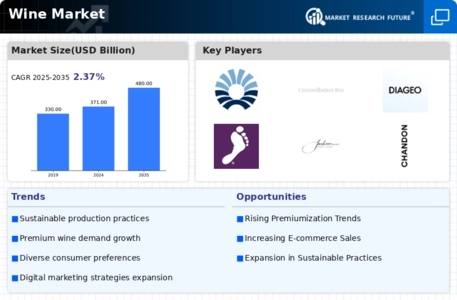
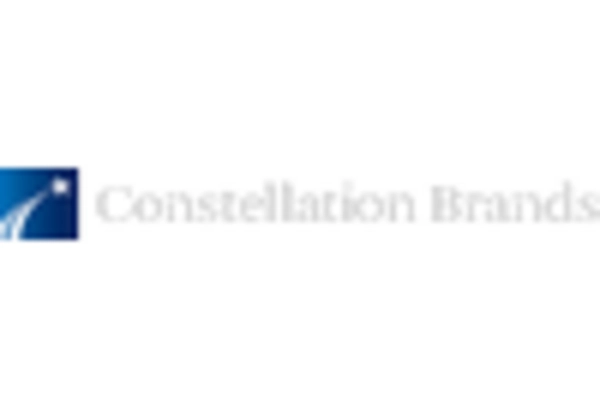
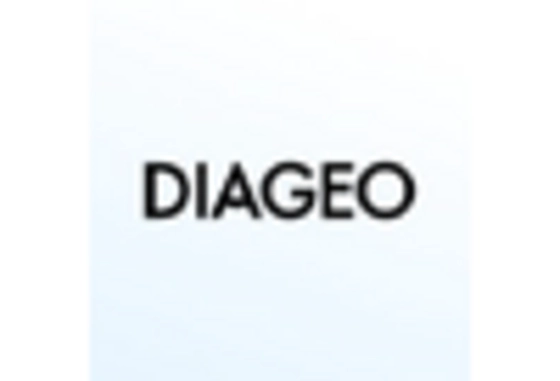
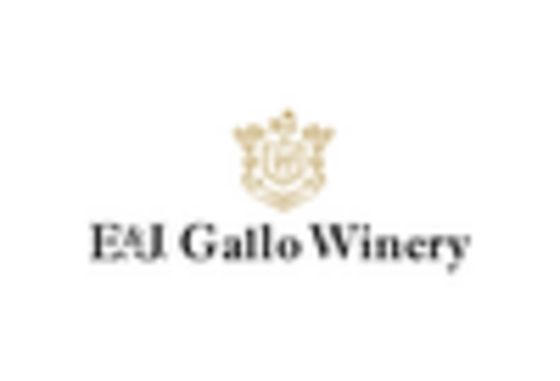
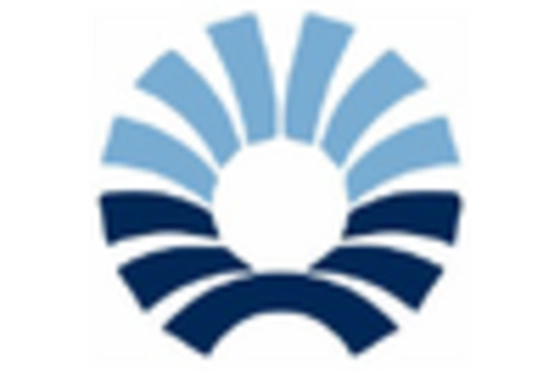
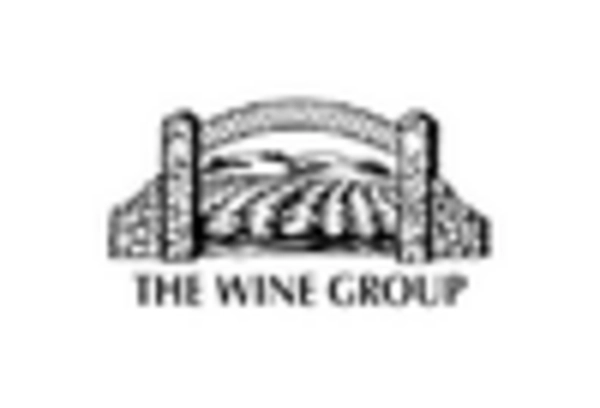
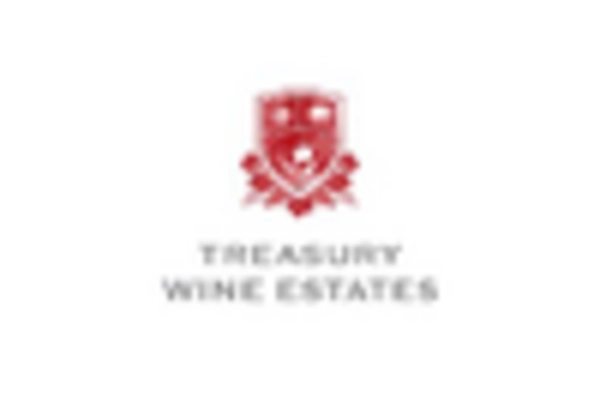

Leave a Comment